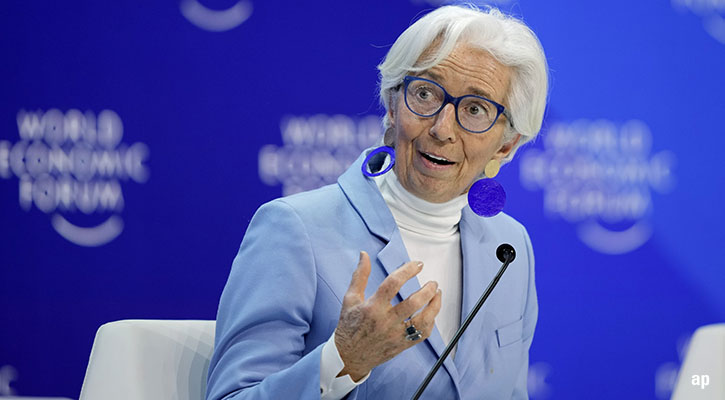
The European Central Bank (ECB) left its key interest rate unchanged for the fifth time in a row at Thursday’s meeting.
The interest rate decision had been widely expected. A recent Reuters poll had 90% of economists predicting no first interest rate cut before June. The main refinancing operations and the interest rates on the marginal lending facility and the deposit facility were left unchanged at 4.50%, 4.75% and 4.00% respectively.
European stock markets and the euro were mostly flat after the ECB’s statement.
In a press conference after the rate announcement, ECB President Christine Lagarde said that some governing council members supported a rate cut on Thursday, on the basis of encouraging inflation data from April. They eventually fell in line with a clear majority of policymakers who backed steady rates at this meeting, Lagarde added.
When Will the ECB Start Cutting Rates?
The ECB made no explicit comment on when rates may be cut, but for the first in the current high-interest cycle said it would be appropriate to cut rates if new data shows inflation is returning to its 2% target.
“If the Governing Council’s new assessment of the inflation outlook, the dynamics of underlying inflation and the strength of monetary policy transmission were to further increase its confidence that inflation is converging to the target in a sustained manner, it would be appropriate to reduce the current level of monetary policy restriction”, the press statement said.
“All eyes were on the ECB’s statement today, to ascertain whether the Fed’s reservations would have any impact on the ECB’s future interest rate decisions”, said Michael Field, European market strategist at Morningstar. “Thankfully for European investors it seems the ECB is happy to go it alone, with language in the statement sufficiently vague, but with no indication that it is backing away from cutting rates as soon as June.”
“We believe this course of action is entirely pragmatic given the economic backdrop in Europe,” he added. Economic growth is weak, with the ECB themselves forecasting just 0.6% growth this year. Inflation in the eurozone fell to 2.4% year on year in March, down from 2.6% in February, putting it within touching distance of the ECB’s targeted 2% level.
“We’ve come a long way from the 10.6% highs in inflation, witnessed just 18 months ago, and at this point lower interest rates seem appropriate”, Field added.
In a written comment, ING Global Head of Macro Carsten Brzeski also predicted a rate move at the next meeting: "Even if the policy announcement does not explicitly mention June as the moment for a first rate cut, we think that today’s meeting should mark the final stop before the cut. In fact, the ECB has gone through a very gradual transition of its communication since December, turning from hawkish to dovish."
ECB president Christine Lagarde said most measures of underlying inflation are easing, wage growth is gradually moderating, and firms are absorbing part of the rise in labour costs in their profits.
In the US, expectations for Federal Reserve rate cuts in 2024 collapsed, following a hotter-than-expected inflation report. In the bond market, expectations now center on the Fed making its first cut in the federal-funds rate in September.
If the Fed does not cut rates in June, the market reaction to the policy divergence might negate much of the benefit of an ECB cut. In addition, if the ECB cuts key interest rates earlier and lower than the Fed, the interest rate gap between the USA and the eurozone will widen. This will push down the euro against the US dollar and inevitably have an impact on capital flows and inflation.
How Will Interest Rate Cuts Affect Markets?
Equity markets tend to rise on anticipated rate cuts, while bond markets tend to suffer. On the other hand, with interest rates already high, falling interest rates also mean lower bond yields, which pushes bond prices higher. Lower rates also make existing bonds, and particularly those already issued during a period of high rates, more attractive for yields.
Meanwhile cash savings rates on bank accounts will likely decrease, to the detriment of savers. Borrowers, by contrast, stand to benefit from lower rates as consumer debt and mortgages become cheaper. In its latest Economic Bulletin, the ECB said lending rates on business loans have already declined slightly, to 5.2% in late 2023, while mortgage rates increased further to 4.0%.




























